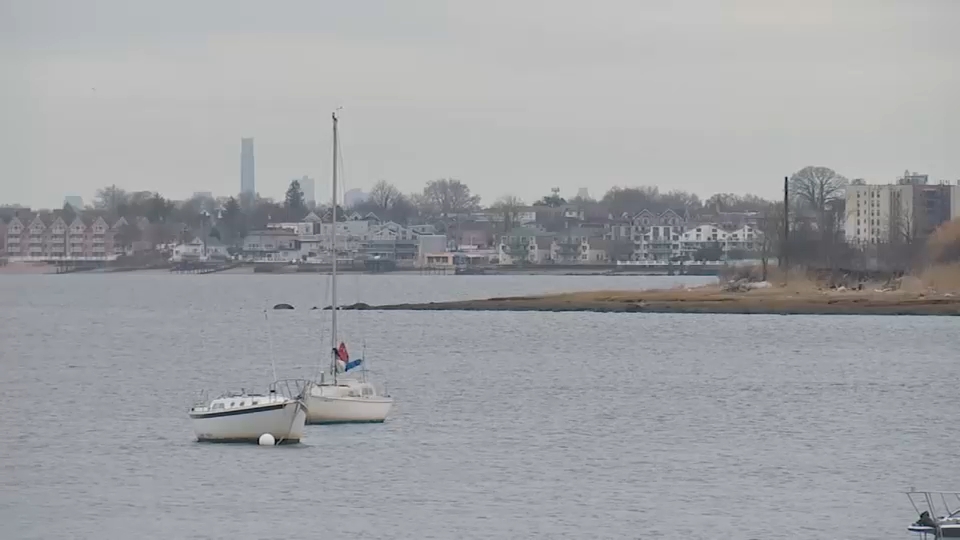Tips on how to be prepared for a Nor'easter


NEW YORK (WABC) -- A Nor'easter will be making its way into our area Monday with dangerous winds and heavy rain. Here's how to stay safe:
Safety Tips:
The safest place to be during high winds is indoors. Postpone outdoor activities if a wind advisory or high wind warning has been issued. High winds can bring down trees and power lines and can turn unsecured objects into dangerous projectiles. To protect against the hazard of high winds, New Yorkers should:
-Check the area immediately surrounding your home for unsecured objects or potentially dangerous conditions. Tree limbs, garbage cans, yard debris, or other materials that can be moved by the wind are potential projectiles aimed at your home or parked vehicle.
-Bring inside loose, lightweight objects such as lawn furniture, potted plants, garbage cans, garden tools and toys.
-Anchor objects that would be unsafe outside, such as gas grills or propane tanks.
-Close up and secure patio umbrellas.
-Secure retractable awnings.
-Remove aerial antennas and satellite television dishes.
-Use caution when walking or driving high profile vehicles during periods of high winds.
-Stand clear of roadways or train tracks, as a gust may blow you toward an oncoming vehicle.
-Use handrails where available.
-Avoid elevated areas such as roofs, as wind speeds may be higher above ground level.
-Avoid anything that may be touching downed lines, including vehicles or tree branches. Puddles and even wet ground can conduct electricity in some cases.
-Watch for flying debris. Tree limbs may break and objects may become loose during strong wind gusts.
-Build or restock your emergency supply kit, including a flashlight, batteries, cash, and first aid supplies.
-Charge cell phones and any battery-powered devices.
-Turn your refrigerator and freezer to a colder setting. If you lose power, items that need refrigeration will stay cooler for longer. Keep refrigerator and freezer doors closed to prevent food spoilage.
-Check on friends, relatives, and neighbors, especially older adults and people with disabilities, access and functional needs, or health conditions. Help them to prepare if needed.
-If you lose power and have a disability or access and functional needs, or use Life Sustaining Equipment (LSE) and need immediate assistance, please call 911.
If you are driving during periods of high winds:
-Keep both hands on the wheel and slow down.
-Watch for objects blowing across the roadway and into your path.
-Keep a safe distance from cars in adjacent lanes, as strong gusts could push a car outside its lane of travel.
-Take extra care in a high-profile vehicle such as trucks, vans and SUVs, as these vehicles are more prone to being pushed or flipped by high wind gusts.
-New Yorkers are encouraged to call 911 to report emergencies at construction sites or buildings. New Yorkers who suspect a building or property has been structurally compromised should call 911.
Additional wind guidance from the NYC Department of Buildings:
To safeguard construction sites, builders, contractors, and developers should take all precautionary measures including but not limited to the following:
-Tie down and secure material and loose debris at construction sites.
-Cover electrical equipment from exposure to the weather.
-Store loose tools, oil cans, and extra fuses in a tool box.
-Secure netting, scaffolding, and sidewalk sheds.
-Suspend crane operations and secure crane equipment when wind speeds reach 30 mph or greater.
-Suspend hoist operations and secure exterior hoists when wind speeds reach 35 mph or greater, unless manufacturer specifications state otherwise.
-Brace and secure construction fences.
-Call 911 if there is an emergency on a construction site.
Coastal Flooding Preparations
NYC residents living in coastal areas expected to experience minor coastal flooding should take the following preparedness steps:
-Prepare a Go Bag that you can grab in case you need to leave your home in a hurry.
-Learn the safest route from your home or workplace to safe, high ground in case you have to evacuate. This should be part of your household emergency plan.
-If you live in a flood-susceptible area, keep materials, such as sandbags, plywood, plastic sheeting, and lumber, on hand to help protect your home.
-Stay informed. Before and during an emergency, the City will send emergency alerts and updates to New Yorkers through various channels, including Notify NYC. Sign up for emergency notifications at NYC.gov/NotifyNYC or call 311. You can also follow @NotifyNYC on Twitter.
-If you have to walk in water, walk where the water is not moving or use a stick to check the firmness of the ground in front of you.
-Stay out of any building if it is surrounded by floodwaters.
-When outside, avoid walking and driving through flooded areas. As few as six inches of moving water can knock a person over. Six inches of water will reach the bottom of most passenger cars, causing loss of control and possible stalling. One or two feet of water can carry away a vehicle.






